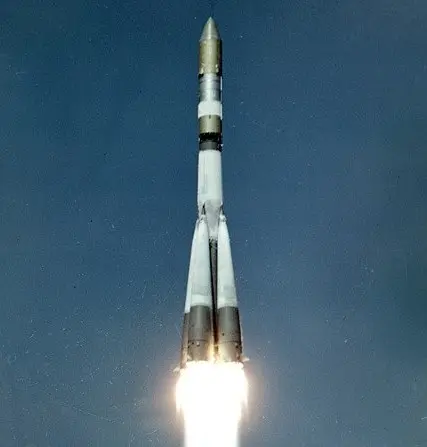Cosmos 57
Launch Success
Liftoff Time (GMT)
07:30:00
Monday February 22, 1965
Mission Details
Launch Notes
Uncrewed flight of the Voskhod spacecraft.
Cosmos 57
The Voskhod-3KD Cosmos 57 was a Soviet uncrewed spacecraft modified from the Voskhod-3KV and closely based on the Vostok-3K capsule. It was capable to carry crews of two cosmonauts and enabled spacewalks on crewed missions. The basic difference to Vostok was the elimination of the ejector seat to make room for two cosmonauts in spacesuits. To soften the landing, a solid fuel retro rocket was incorporated. Also a solid fuel back-up retro rocket system was carried in front of the spherical reentry capsule. The Voskhod launcher works normally and places its payload in an orbit 165km x 427km x 64 °. Immediately, the ground engineers receive video images enabling them to see that the Volga airlock deploys correctly and that the exterior hatch opens and closes as expected. But at the start of the third orbit, contact was suddenly lost by the three tracking stations that were in sight of Cosmos 57. The engineers quickly understood that the ship's self-destruct system had been activated. Following the explosion, 168 pieces were spotted on the radar. They will all enter the atmosphere between March 31 and April 6, 1965. The cause of the malfunction is quickly identified. Before launch, technicians noted that the exterior hatch might not close completely normally if there was no pressure difference between the exterior and the interior. It was therefore decided that once the ship was in orbit, the order to close the hatch (order #42) would be sent twice, not just once. However, a 3KD operating procedure gives a correspondence between a doubled order n°42 and a n°5 order (order n°5 orders atmospheric re-entry). Clearly, if the hatch is asked to close twice, the ship understands that it must enter the atmosphere. When the IP-7 station from Elizovo sends the famous order No. 42 to close the hatch, the IP-6 station from Klioutchi does the same. The spacecraft understands that it must turn on its braking motor to begin its return to Earth.
Low Earth Orbit
1 Payload
5,682 kilograms
Launch Site
Stats
Voskhod
7th
Mission
1st
Mission of 1965
OKB-1
117th
Mission
6th
Mission of 1965
1965
15th
Orbital launch attempt

